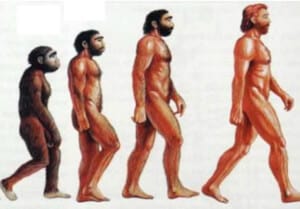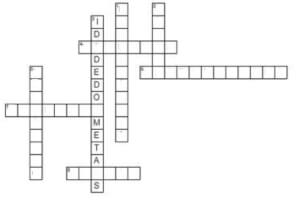
Evaluation of History on Prehistory. This one is geared towards sixth year students and covers image reading and interpretation and word searches.
This history test is available for download in an editable Word template, ready to print in PDF and also the completed activity.
Download this story activity at:
SCHOOL: DATE:
PROF: CLASS:
NAME:
1.Analyze the image below and answer:

The instruments represented in the image on the right were made of ________ and ________ stone, and they come from different prehistoric periods and from various regions of the world. Check the alternative that fills in the blanks above:
The. ( )chipped and polished
B. () smooth polished
ç. ( ) broken and polished
d. () shaved and polished
2. Review the image below:

This image represents: Check only one alternative.
The. ( )Human evolution.
B. ( )How monkeys look like humans.
ç. ( ) How the skin color of human beings has changed over the years.
d. ( ) How the human being has gotten taller over the years.
3. Look at the image:

I. The image I, represents Homo erectus and the image II, represents Homo sapiens.
II. The image I, represents Homo sapiens and the image II, represents Homo erectus
III. The images I and II represent Australopithecus.
IV. The images I and II represent Homo habilis.
Check only one alternative.
It's correct:
The. ( ) I
B. ( ) II
ç. ( ) III
d. ( ) IV
4.Read the clues, then select the words in the box above the crossword to fill it in correctly.
Neolithic, Paleolithic, Women, Caves, Metal Age, Nomad, Sedentary, beans

Vertical
1. Period in which the physical and cultural evolution of human beings occurred.2.
2. That one does not have a fixed address. Lives moving from one place to another.3.
3. This phase began with the discovery of the metal casting technique.
5. Period when humans learned to domesticate animals.
Horizontal
4. Places where people from the Paleolithic period sought shelter.
6. One who has a fixed home.
7. Considered a superior being in Prehistory.
8. One of the foods cultivated by the first American peoples.
5. Primitive societies whose remains were found on the coast of South America, especially in Brazil, and which would have existed between 6000 d. Ç. and 1000 d. C., that is, to more than 8 thousand years. They were called:
Check only one alternative.
The. ( ) sambaqui trees
B. ( ) pandaquieras
ç. ( ) mandachi trees
d. ( ) sabaquied
6. The main foods cultivated about 7,000 years ago by Americans consisted of: Check only one alternative:
The. ( )They cultivated beans, peppers, squash, corn and tomatoes.
B. ( ) They only cultivated corn, tomatoes and cucumbers.
ç. ( ) They only cultivated beans, sweet pepper and pumpkin.
d. ( ) They only cultivated corn and tomatoes.
7. The first inhabitants of the American continent were _____________ and lived from _______, gathering and _______. Check the alternative that fills in the blanks correctly.
The. ( )nomads/fishing/hunting
B. () sedentary/collection/hunting
ç. ( ) nomads/agriculture/fishing
d. ( ) nomads/coffee growing/hunting
8. Among the main changes that took place in the Neolithic period we can highlight:
The. ( ) the development of religious rituals, social organization and the arts;
B. ( ) in sculpture and writing
ç. ( ) in religion and writing
d. ( ) in writing and culture
9. The marks of human presence in the Paleolithic Period can be seen until today:
The. ( ) in cave paintings
B. ( ) in bronze sculptures
ç. ( ) in caves through local plants
d. ( ) in the sculptures found on the banks of ancient rivers
10. During this period, human groups lived in a natural state, that is, integrated into nature: they collected fruits, grains, roots, fished and hunted animals:
The. ( ) Paleolytic
B. ( ) Neolithic
c.( ) age of metals
d. ( ) American peoples
By Rosiane Fernandes Silva – Graduated in Letters
Atanswersare in the link above the header.


